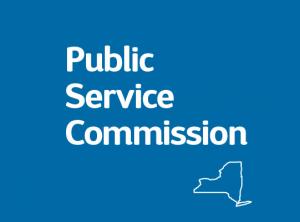New York Slashes LDC's Rate Proposal

Despite acknowledging that it has been a decade since a natural gas local distribution company (LDC) had last prosecuted a base rate case, the New York Public Service Commission has determined that the LDC, National Fuel Gas Distribution Corporation (NFGD), was entitled to only a fraction of the increase it had requested. Whereas the company had sought to raise its base rates by $41.7 million, the commission held that it could implement a rate hike of only $5.9 million. That translates into disapproval of more than 85% of the LDC's original proposal.
The commission pointed out that although it had been 10 years since NFGD's rates had been increased, that did not necessarily mean that the company's rates had not been reviewed during that time. Indeed, the commission related that it had actually instituted a proceeding in 2013 to examine excess earnings the LDC was realizing under the tariffs and schedules adopted in 2007.
The result of that inquiry was a finding that, due at least in part to declining natural gas commodity costs over the previous few years, the LDC was overearning. After the company entered settlement discussions, an agreement was reached in 2014 that froze NFGD's rates and refunded $7.5 million to ratepayers.
But in 2016, the company returned to the commission with a new rate application, in which it said it was now experiencing a revenue deficiency. It recommended an increase of $41.7 million, in reliance on a rate of return on common equity (ROE) of 10.2%.
A key element of the new rate plan was an increase in the LDC's monthly customer charges. Similar to assertions made by a number of energy utilities in recent rate cases, NFGD contended that its present minimum charge level was insufficient to cover its fixed costs. The company therefore asked that it be permitted to recover most of its authorized increase via higher customer charges.
More specifically, NFGD suggested that for its residential customers, almost 75% of any increase should take effect through higher minimum charges, with only 25% recouped through volumetric block rates. For commercial customers, the company proposed that the additional revenue responsibility be assigned to minimum charges and volumetric rates on a 50/50 basis. Interestingly, though, the LDC did not seek to raise the minimum bills applicable to largervolume customers, instead attesting that the entirety of their respective rate increase should occur via volumetric rates alone.
An administrative law judge with the commission was tasked with initially evaluating the LDC's rate plan, inclusive of the company's proposed ROE and minimum charge levels. After weighing the arguments of various parties, the law judge concluded that NFGD should be allowed to raise its rates by just shy of $8.5 million, based on an 8.6% ROE. However, the law judge rejected that part of the plan that would have significantly increased certain of the minimum charges to accommodate the additional revenues.
The company, as well as certain intervenors, challenged the law judge's recommendations on customer charges and ROE. As to minimum bill levels, the company stressed that its customer charges are presently among the lowest in the state and would still be so even with the increase. It underscored its previous assertions that its current schedule of minimum charges is inadequate to cover its fixed costs.
The commission, however, was not persuaded. It echoed the law judge's holding that higher customer charges not only create affordability problems for low-income ratepayers, but also suppress incentives for conservation and energy-efficiency improvements. From the commission's perspective, the record simply did not support any allocation of the rate increase to the minimum charge component, at least for residential and smaller general service customers.
The commission came to a different conclusion on minimum charges for the LDC's larger customers, however. Although NFGD had not requested any increase in the minimum bills for those customers, nor had the law judge advocated for such, other parties had urged the commission to require an increase in the minimum charge for large customers. They stated that larger customers are "extremely sensitive and vulnerable" to changes in commodity rates.
Therefore, they claimed, it would be more equitable for larger customers for their minimum bills to rise than for their volumetric rates to absorb all of the authorized increase. In adopting that position, the commission observed that cost-of-service studies associated with NFGD's larger-volume customers indicated that an increase in their respective customer charges was called for. The commission ultimately ruled that the portion of the total increase allocated to larger customers should be implemented on an equal 50/50 basis as between minimum charges and volumetric rates.
In protesting the law judge's 8.6% recommended ROE, the company complained that other participants had failed to take into account expected upward adjustments in interest rates, even if minimal. The LDC also challenged the proxy groups that some parties had selected for purposes of ROE comparisons. It likewise objected that its particular operating characteristics had not been factored in and that its specific circumstances warranted a higher market risk premium. Finally, NFGD told the commission that the law judge's proposed ROE would be lower than that of any of the company's peer utilities in New York.
Addressing that last point first, the commission commented that the peer utility ROEs to which the company referred were inapposite, inasmuch as those ROEs had been the product of settlement negotiations. The commission added that they all had pertained to multi-year rate plans, which engender an element of risk unto themselves. Thus, the commission said, they were of little relevance in setting a ROE level for a company in a fully litigated rate case.
The commission was equally dismissive of the LDC's other ROE arguments, deeming them premised on little more than speculation. In the end, though, the commission did bump up the company's authorized ROE to 8.7%, producing an overall rate of return of 6.92%. Re National Fuel Gas Distribution Corp., Case 16-G-0257, Apr. 20, 2017 (N.Y.P.S.C.).



